Scalars and Vectors - Definition, Examples, Types, FAQs
Vectors are fundamental elements in physics and mathematics, representing quantities that have both magnitude and direction. Unlike scalar quantities, which can be simply added or subtracted using basic arithmetic, vector operations require special consideration of their directional components. Understanding vector addition and subtraction is essential for accurately describing physical phenomena such as forces, velocities, and displacements.
JEE Main/NEET 2027: Physics Important Formulas for Class 10
NEET 2025: Mock Test Series | Syllabus | High Scoring Topics | PYQs
JEE Main: Study Materials | High Scoring Topics | Preparation Guide
JEE Main: Syllabus | Sample Papers | Mock Tests | PYQs
- Physical Quantity:
- What is Scalar quantity and give scalar quantity examples:
- What is vector quantity and give vector quantity examples:
- Different types of vector:
- Solved Example Based on Scalar and Vector
- Summary
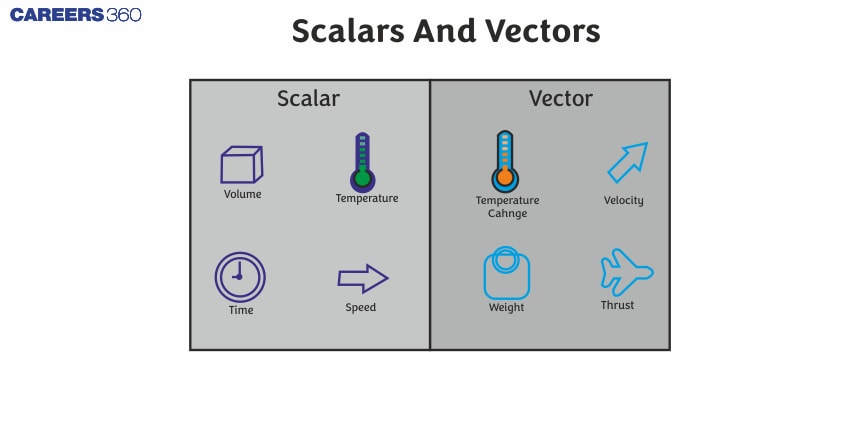
This article delves into the methods for identifying vectors and scalers starting with the definition of scalers, vectors and different types of vectors and their properties, which belongs to the chapter kinematics, which is an important chapter in Class 11 physics. It is not only essential for board exams but also for competitive exams like the Joint Entrance Examination (JEE Main), National Eligibility Entrance Test (NEET), and other entrance exams such as SRMJEE, BITSAT, WBJEE, BCECE and more. Over the last ten years of the JEE Main exam (from 2013 to 2023), one question has been asked on this concept directly and many indirectly in NEET as well.
Physical Quantity:
A physical quantity is a matter or system property that can be measured and quantified. At least two attributes are held by all physical quantities. The first is the numerical magnitude, and the second is the unit of measurement.
Types of physical quantities:
There are seven basic physical quantities.
Length, Mass, Time, Temperature, Current, luminous intensity, and amount of substances.
Some quantities in physics have simply magnitude, some have both magnitude and direction. It is fundamental to know the properties of vectors and scalars in order to understand these physical quantities.
What is Scalar quantity and give scalar quantity examples:
Scalar definition and Scalar meaning: A scalar property is one that can only be described in terms of magnitude. Scalars can be used to describe a variety of quantities in physics. Distance, mass, temperature, speed, and energy are only a few examples. A scalar value is a single value; a scalar number can never be negative because it just has magnitude and no direction.
For instance, consider the terms string number, variable, and column. In contrast to a set of values, a scalar value is a single value. Every point in space is represented mathematically as a scalar value.
A scalar is a field element that is used to define a vector space. Physical scalar fields can be thought of as a subset of more general fields like vector fields, spinor fields, and tensor fields, while scalars are usually thought of as special cases of multi-dimensional quantities like vectors and tensors.
Relativistic scalar: The variations between the outcomes of (four-component, two-component, or one-component “scalar”) relativistic quantum theoretical computations using a finite and infinite speed of light are known as relativistic effects. Electric charge, proper time and proper length space time intervals, and invariant mass are all scalar quantities in relativity.
The Higgs field is the only fundamental scalar quantum field that has been detected in nature. Scalar quantum fields, on the other hand, appear in many effective field theory models of physical processes.
Also read -
- NCERT Solutions for Class 11 Physics
- NCERT Solutions for Class 12 Physics
- NCERT Solutions for All Subjects
What is vector quantity and give vector quantity examples:
Vector definition and Vector quantity meaning: Vector is a quantity that can be described in both the terms of magnitude and direction. A vector is a directed line segment in geometry. Certain quantities in physics can only be described using vectors.
Force, velocity, displacement, position vector, acceleration, linear momentum, and rotational momentum are all examples.
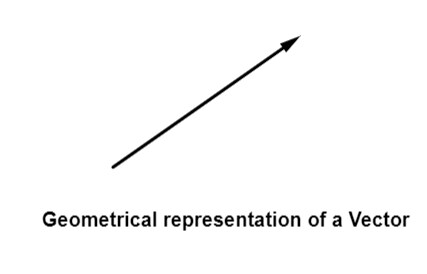
Magnitude of a vector:
The length of a vector determines its magnitude. The magnitude of a vector is sometimes referred to as the vector's norm. For a vector A, the magnitude or norm is denoted by A.
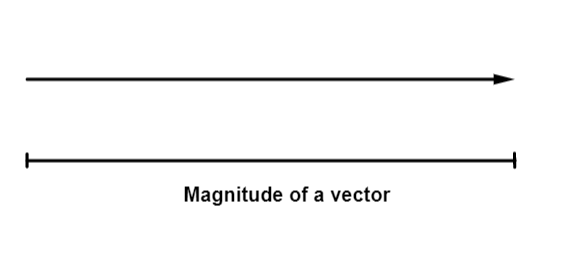
| Related Topics Link, |
Different types of vector:
- Equal vectors
a) Collinear vectors
i) Parallel vectors
ii) Anti-parallel vectors
- Unit vector
- Orthogonal unit vectors
Equal vectors:
Two vectors A and B are said to be equal since it have equal magnitude as well as same direction along with represent the same physical quantity.
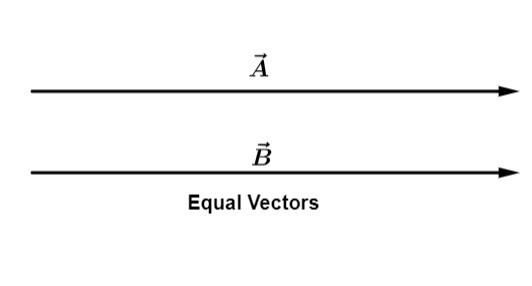
a) Collinear vectors:
Vectors that behave in the same direction are known as collinear vectors. The angle between them can be 0oor 180o
i) Parallel vectors:
The angle formed by two vectors A and B acting in same direction along same line is 0o.

ii) Anti-parallel vectors:
When two vectors A and B are in opposite directions along same line, they are said to be antiparallel. The angle between them is then 180o.

Unit vector:
A unit vector is a vector whose magnitude is divided by its length. The unit vector for A is denoted by A. It has a magnitude of one or unity. As a result, we can declare that the unit vector just provides the vector quantity's direction.
Orthogonal unit vectors:
i, j and k are examples of orthogonal vectors. Orthogonal vectors are two vectors that are perpendicular to each other.
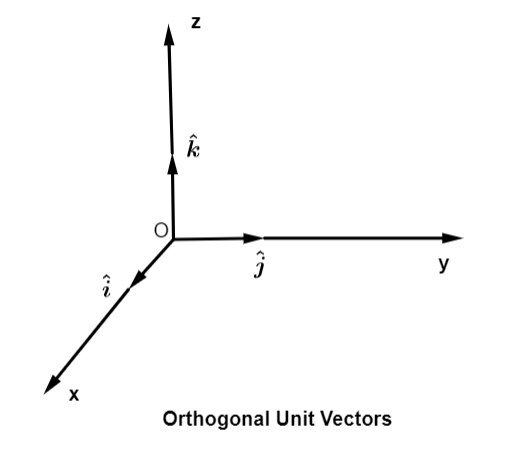
Addition of vectors:
The approach of standard algebra cannot be used to add vectors since they have both magnitude and direction. As a result, vectors can be added geometrically or analytically using vector algebra methods. The triangular law of addition or parallelogram law of vectors approach is used to discover the sum or resultant of two vectors that are inclined to each other.
By triangular law of addition method,
Magnitude of resultant vector,
The direction of the resultant vector is given by:
Subtraction of vectors:
Because vectors have both magnitude and direction, the approach of regular algebra cannot be used to subtract two vectors. As a result, this subtraction can be done analytically or geometrically.
The magnitude of the resultant vector,
The direction of the resultant vector is given by:
Multiplication of vector by a scalar:
A vector A multiplied by a scalar results in another vector A. If is a positive number, then A is also in the direction of A. It is a negative number, then A is in the opposite direction to the vector A
Scalar product of two vectors:
Definition:
The scalar product, often known as the dot product of two vectors, is made up of vectors and the angle's cosine.
Thus, if there are two vectors A and B having an angle of between them, then their scalar product is defined as A . B=AB cosθ. Here, A and B are magnitudes of A and B.
Properties of scalar product:
Note: Here A, B and C are vectors.
- The product quantity A . B is always a scalar. It is positive, when the angle between the vectors is acute i.e. <90o and it is negative if the angle between them is obtuse i.e. 90o<<180o
- The scalar product is commutative i.e. A . B=B . A
- The vectors obey distributive law i.e. A . (B+C)=A . B+A.C
- The angle between the vectors =A.B/|AB|
- The scalar product of two vectors will be maximum when cosθ=1 i.e. =0o, when the vectors are parallel, (A . B)max=AB
- The scalar product of two vectors will be minimum, when cosθ=-1 i.e. =180o, when the vectors are antiparallel, (A . B)min=-AB
- The scalar product of a vector with itself is termed a self-dot product.
- If two vectors A and B are perpendicular to each other, then their scalar product is A.B=0, because cos90o=0. Then the vectors are said to be mutually orthogonal.
Also Read:
- NCERT solutions for Class 11 Physics Chapter 3 Motion in a straight line
- NCERT Exemplar Class 11 Physics Solutions Chapter 3 Motion in a straight line
- NCERT notes Class 11 Physics Chapter 3 Motion in a straight line
Vector product of two vectors:
Definition:
The vector product is a vector with a magnitude equal to the product of the magnitudes of two vectors plus the sine of the angle between them, also known as the cross product of two vectors. The product vector is perpendicular to the plane containing the two vectors, according to the right-hand screw rule or right-hand thumb rule.
Properties of vector product:
Note: Here A, B and C are vectors.
- It is not commutative to take the vector product of two vectors. A × B=-[B ×A]
- The magnitude of the vector product of two vectors will be the greatest, when sinθ=1 that is =90o, When the vectors A and B are perpendicular to one another.
(A × B)max=
- The vector product of the two non-zero vectors will be minimum when sinθ=0 i.e. =0oor 180o
(A × B)min=0
i.e. If the vectors are parallel or antiparallel, the vector product of two non-zero vectors vanishes.
- The null vector is the self-cross product, which is the product of a vector with itself. In physics, the null vector is simply referred to as zero.
Vector products are used to define a variety of quantities in physics. The vector products are used to construct physical quantities that represent rotational effects, such as torque and angular momentum.
Position vector:
A position vector is a scalar that represents the position of a particle in relation to some reference frame or coordinate system at any given time.
Recommended Topic Video
Solved Example Based on Scalar and Vector
Example: Which among the following is a scalar quantity?
1) Angular velocity
2) Displacement
3) (correct) Current
4) Area of a planar surface
Solution:
Scalars: Physical quantities can be described completely by their magnitude only but no particular direction. Physical quantities which are scalars Distance, speed, work, etc.
Angular velocity, displacement, and area of the planar surface is a vector quantity because it has a specific direction. Current is a scalar quantity.
Hence, the answer is the option (3).
Example 2: Which of the following is false about scalar quantity?
1) A scalar quantity has magnitude only
2) A scalar can be either positive or negative
3) A scalar quantity can never be negative
4) None of the above
Solution:
As we learned,
Scalars are positive, negative or zero (E.g., temperature, T = -2 Degree C).
Represented by alphabet only A, B, C.
These physical quantities follow normal algebraic rules of addition.
Hence, the answer is the option (3).
Example 3: Which of the following sets has all the vector quantity only?
1) Current, power, Force and velocity
2) Force, torque, moment of inertia, velocity
3) Acceleration, velocity, torque, momentum
4) Speed, displacement, velocity, Force
Solution:
Vectors -Physical quantities can be described by their magnitude and directions.
E.g. Displacement, force, velocity, etc. are vectors. And current, power, moment of inertia, and speed are scalar quantities.
Hence, the answer is the option (3).
Q 4. Which of the following is not a type of vector?
1) Equal vector
2) Collinear vector
3) Co-initial vector
4) Special Vector
Solution:
Types of vectors
There are four types of vectors.
1- Equal vectors
2- Negative vectors
3- Collinear vectors
4- Co-initial vectors
Hence, the answer is the option (4).
Q 5. Two vectors are said to be equal if
1) The magnitude of the two vectors is the same.
2) The direction of two vectors is the same
3) Both magnitude and direction are the same
4) none of the above
Solution:
Equal vectors: Two vectors are said to be equal if they have equal magnitude and the same directions.
Hence, the answer is the option (3).
Summary
In physics, scalar and vector are the physical quantities in the natural world. Scalars are physical quantities that simply have a size or a numerical value (magnitude). You can determine the quantity of something using a scalar.
Also check-
- NCERT Exemplar Class 11th Physics Solutions
- NCERT Exemplar Class 12th Physics Solutions
- NCERT Exemplar Solutions for All Subjects
NCERT Physics Notes:
Frequently Asked Questions (FAQs)
Scalar quantity:
A scalar property is one that can only be described in terms of magnitude.
Scalar can be used to describe a variety of quantities in physics.
Distance, mass, temperature, speed, and energy are only a few examples.
Vector quantity:
Vector is a quantity that can be described in both the terms of magnitude and direction.
A vector is a directed line segment in geometry. Certain quantities in physics can only be described using vectors.
Force, velocity, displacement, position vector, acceleration, linear momentum, and rotational momentum are all examples.
Different types of vector:
Equal vectors
a) Collinear vectors
i) Parallel vectors
ii) Anti-parallel vectors
Unit vector
Orthogonal unit vectors
A unit vector is a vector whose magnitude is divided by its length. The unit vector for A is denoted by A. It has a magnitude of one or unity. As a result, we can declare that the unit vector just provides the vector quantity's direction.
The scalar product, often known as the dot product of two vectors, is made up of vectors and the angle's cosine.
The vector product is a vector with a magnitude equal to the product of the magnitudes of two vectors plus the sine of the angle between them, also known as the cross product of two vectors.
Also Read
05 Feb'25 04:57 PM
11 Jan'25 03:00 PM
24 Dec'24 01:28 PM
27 Nov'24 01:02 PM
26 Nov'24 01:31 PM
20 Nov'24 04:50 PM
20 Nov'24 12:59 PM
16 Nov'24 01:06 PM
14 Nov'24 04:17 PM
13 Nov'24 11:06 AM

